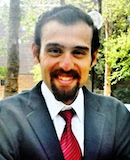By: Mostafa Sayyadi
In this article, we’ll discuss different types of knowledge that should be considered and built upon when forming and managing a team driven toward success—including individual and collective knowledge.
Knowledge, with its wide classifications, can be parsed into individual and collective knowledge. Executives recruit followers based on their individual knowledge, which refers to that person’s skills, prior-knowledge, and proficiencies—sometimes referred to as competencies. Collective knowledge, on the other hand, has been defined as “organizing principles, routines and practices, top management schema, and relative organizational consensus on past experiences, goals, missions, competitors, and relationships that are widely diffused throughout the organization and held in common by a large number of organizational members”.1
Thus, collective knowledge is part of the executive’s protocol and comes fairly natural at the higher echelons of the organization. Executives follow Thomas Davenport and Laurence Prusak’s concern that concludes that if an executive cannot inspire followers to share their individual knowledge with others, then this individual knowledge is not valuable to the organization.2 Individual knowledge can, therefore, become a valuable resource by developing an organizational climate of openness for members to exchange their ideas and insights. Executives must create a climate of trust and openness for individuals to share individual knowledge. New technologies drawing on social-software systems through sharing individual knowledge around the organizations can positively contribute to create collective knowledge. Therefore, executives should build an atmosphere of trust and openness and use technology to convert individual knowledge into valuable resources for their organization to close the performance gap and help organizations prosper.
Knowledge can also be classified using individual, social, and structured dimensions. Executives can categorize followers based on their human knowledge which focuses on individual knowledge and manifests itself in individual’s competencies and skills. This form of knowledge comprises the skills gained by individual experiences, and learned as rules and instructions formulated by executives for followers to use as a guide. Social knowledge, on the other hand, is categorized as individual knowledge that is shared so that it can become collective knowledge. Executives can use structured knowledge that emerges in formal language from annual reports, memos, and other means of communication to be represented as statements. Therefore, executives can classify knowledge in this way so that it emerges at three levels—individual (i.e. human), group (i.e. social) and organizational (i.e. structured).
Moreover, there is a scientific, philosophical, and commercial side to knowledge that executives should at least be aware of in today’s hypercompetitive business environment. Scientific knowledge is objective and manifests itself as provable and verifiable knowledge or truth, while philosophical knowledge clarifies that “truth is embedded in language and therefore inaccessible”.3 The key for executives is that commercial knowledge, unlike scientific and philosophical knowledge, focuses on enhancing effective performance. Answering the questions executives often ask: “What works?” Based on this view, this kind of knowledge empowers the capabilities of an organization, and actively improves its competitive advantage in the marketplace. Executives are already aware that commercial knowledge takes an objective approach and can positively contribute to a firm’s performance. The key is how to use this knowledge, enhance it, distribute it, and capture it. Executives now have a good handle on knowledge in corporations.
About the Author
 Mostafa Sayyadi works with senior business leaders to effectively develop innovation in companies, and helps companies—from start-ups to the Fortune 100—succeed by improving the effectiveness of their leaders. He is a business book author and a long-time contributor to business publications and his work has been featured in top-flight business publications.
Mostafa Sayyadi works with senior business leaders to effectively develop innovation in companies, and helps companies—from start-ups to the Fortune 100—succeed by improving the effectiveness of their leaders. He is a business book author and a long-time contributor to business publications and his work has been featured in top-flight business publications.
Featured image via Unsplash.

